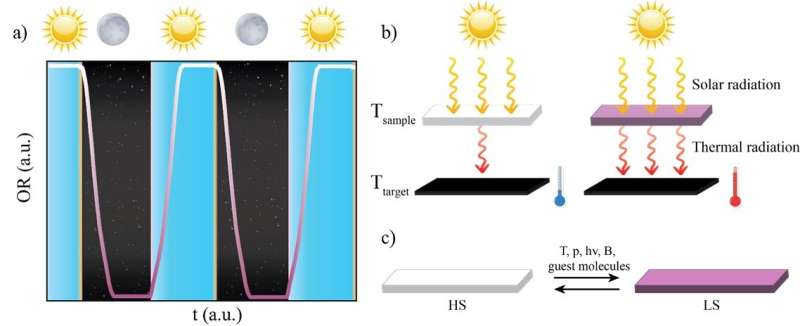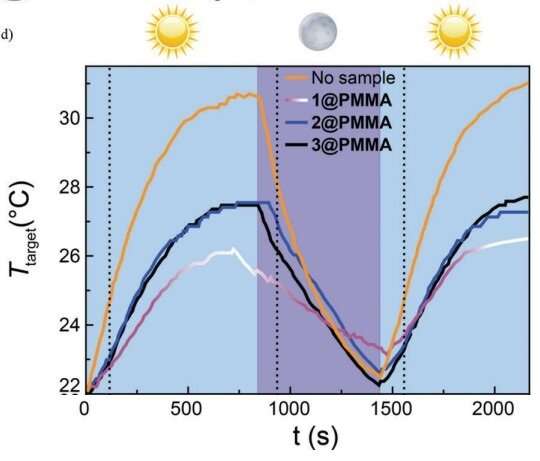Temperature fluctuation control with a switchable spin-crossover material

Alleviating the heat-island effect through thermal regulation mechanisms in building elements can improve human thermal comfort and the living environment in urban areas. Passive thermal regulation systems incorporated with roofs, windows or walls, and operating without the need for electricity, are an energy-efficient and environmentally sustainable solution.
Phase changing materials minimize temperature fluctuations through the use of latent heat, but have some limitations. The application of these techniques has resulted in cooling during both day and night. Therefore, research into new materials that reduce temperature fluctuations in both directions is required.
Researchers led by Dr. José Sánchez-Costa and Dr. Ana Espinosa at IMDEA Nanociencia have demonstrated that molecular materials can be applied for thermal regulation purposes in a novel approach. In their latest work, published in Advanced Science, the group tested molecular-based coordination polymers embedded in plastic matrices against several heating-cooling cycles.
They observed a concomitant phase transition and color change, from pink to white, that resulted in a cooling effect respect to other thermochromic materials. The measured temperatures indicated that the heated material was able to dissipate heat more efficiently via two effects: energy absorption that triggers the phase transition and optical reflection due to color change toward white—reflecting more energy. Furthermore, the cooled material (pink) produced a dampening of the temperature decrease due to the desorption of heat produced in the phase transition. This translates into lower temperature fluctuation during heating and cooling cycles.

The spin-crossover molecule materials were remarkably stable upon cycling; in this study, up to 40 cycles were performed, producing similar results. These versatile materials can be designed for specific properties, such as transition temperature and thermal hysteresis.
In this study, the researchers demonstrate that the heat generated by the sun is sufficient to produce spin transition in a spin-crossover material. This, in turn, leads to a cooling effect due to an increase in light reflection resulting from the color change and the energy absorption associated with the spin transition. Therefore, spin-crossover molecular materials could be used to reduce temperature fluctuations, and could be potentially implemented in passive temperature control elements in buildings.
More information: Esther Resines‐Urien et al, Concomitant Thermochromic and Phase‐Change Effect in a Switchable Spin Crossover Material for Efficient Passive Control of Day and Night Temperature Fluctuations, Advanced Science (2022). DOI: 10.1002/advs.202202253
Journal information: Advanced Science
Provided by IMDEA Nanociencia




















